Cavern Pools are fed by dripping water. No streams flow in or out and contaminants cannot be washed away. If coins or food are thrown into pools, the copper in coins turns rocks green. Decaying food discolors the water and produces foul odors. When the Cavern was forming, this room was filled with water. Today the cave is relatively dry, and only a few small pools remain. |
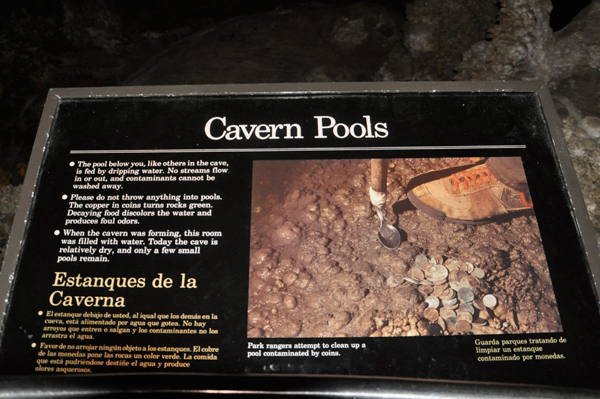 |
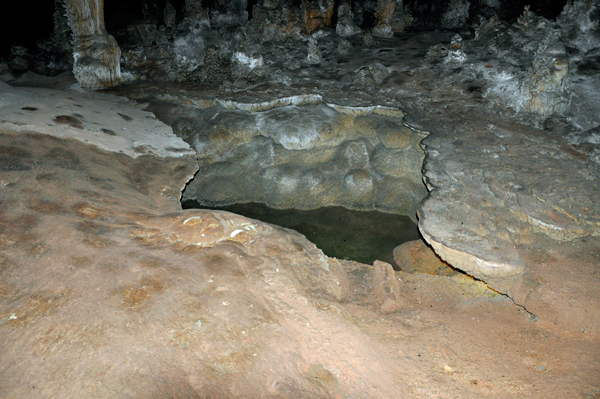 |
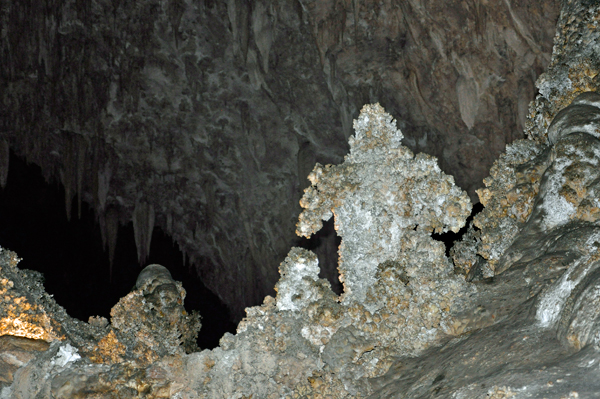 |
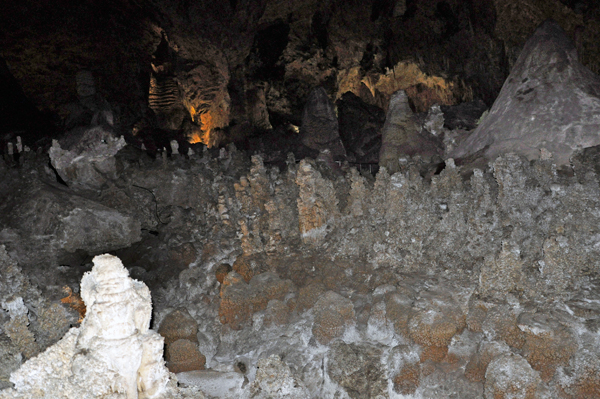 |
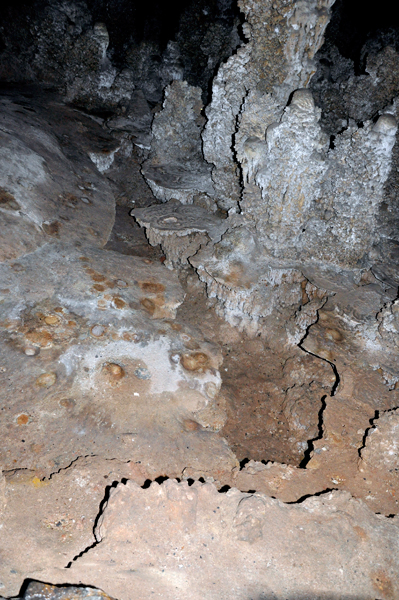 |
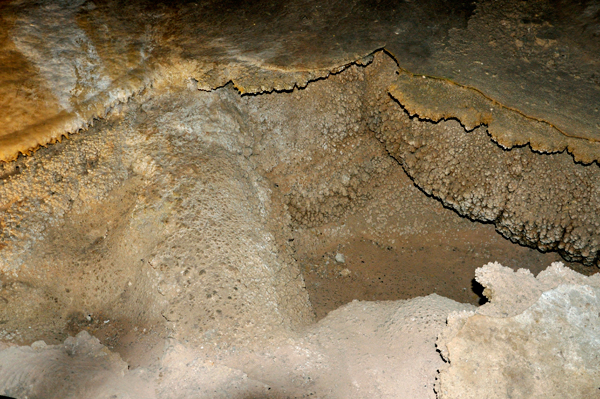 |
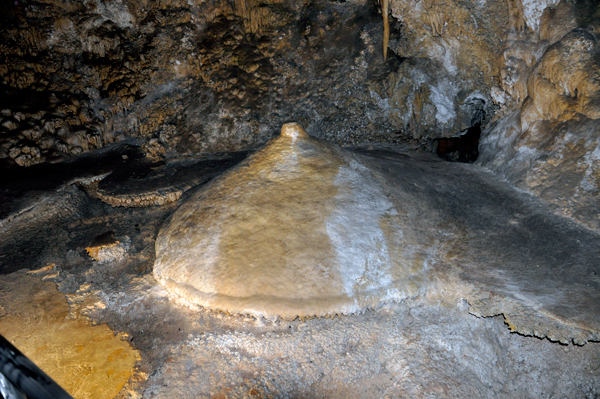 |
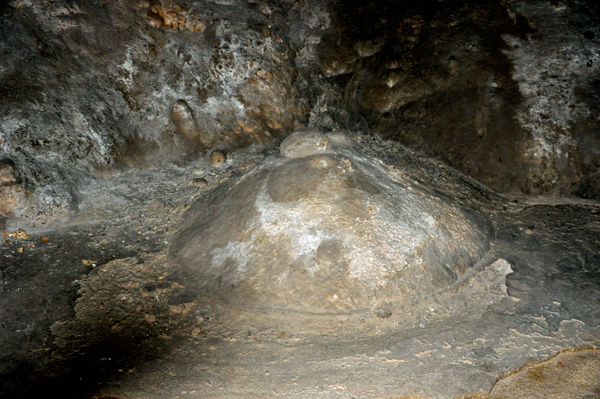 |
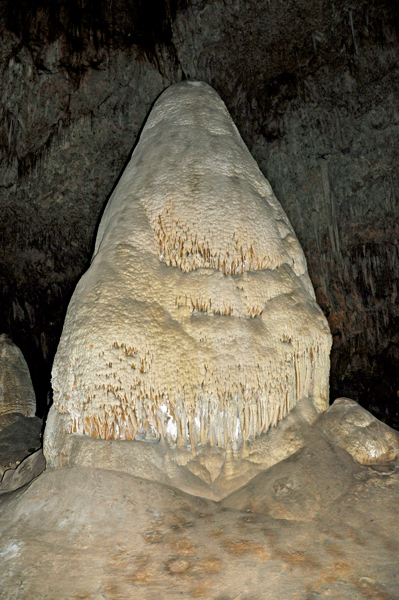 |
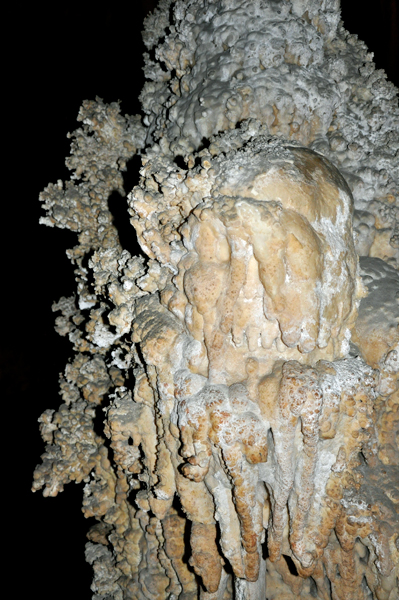 |
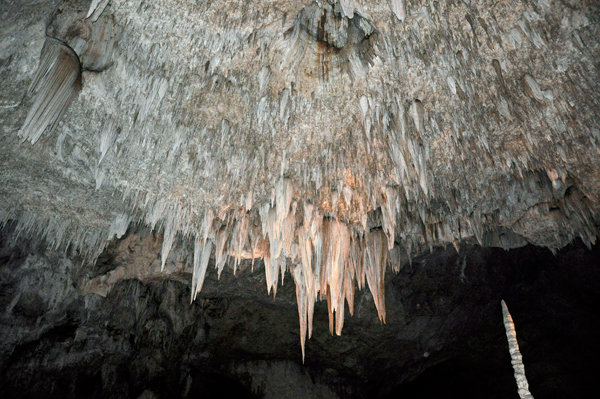 |
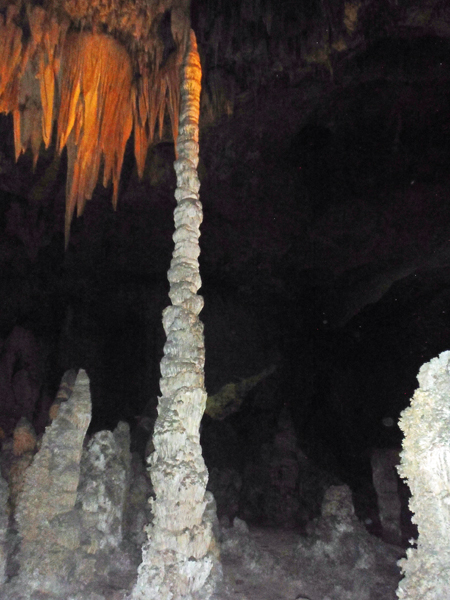 |
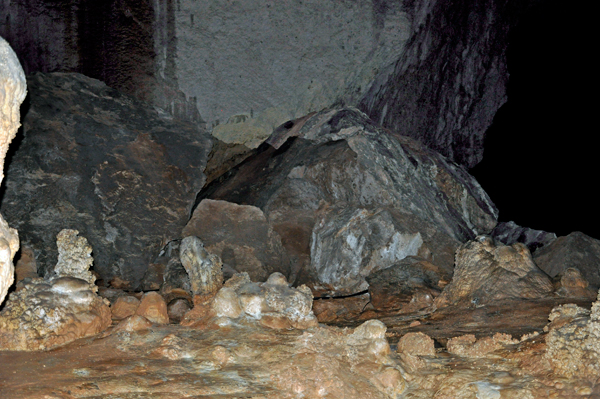 |
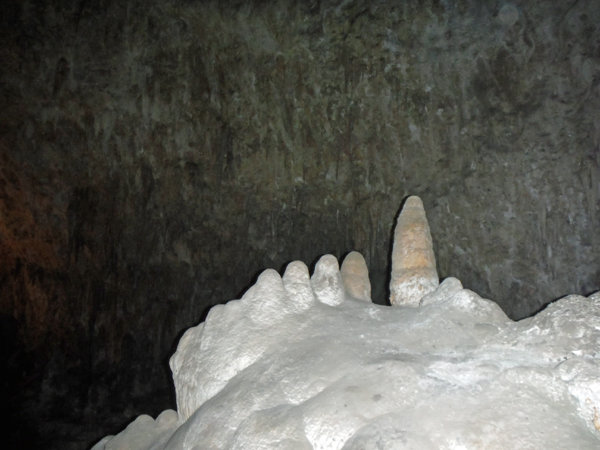 |
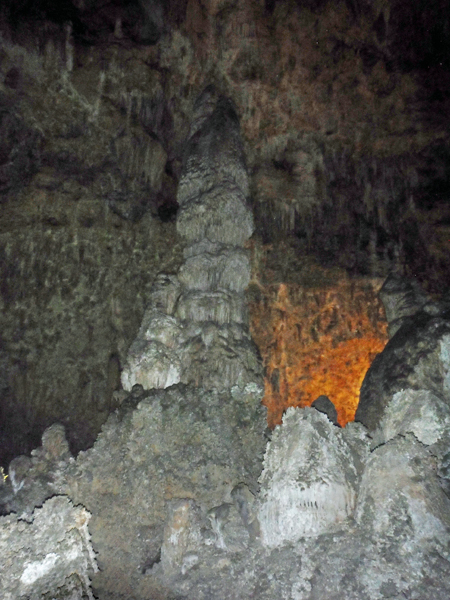 |
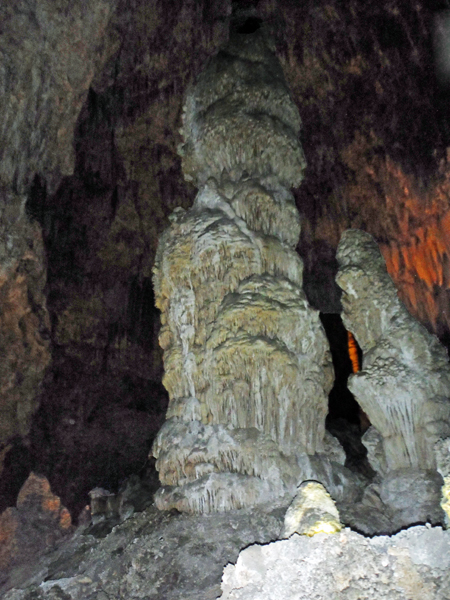 |
Below: A small tunnel in Carlsbad Cavern. |
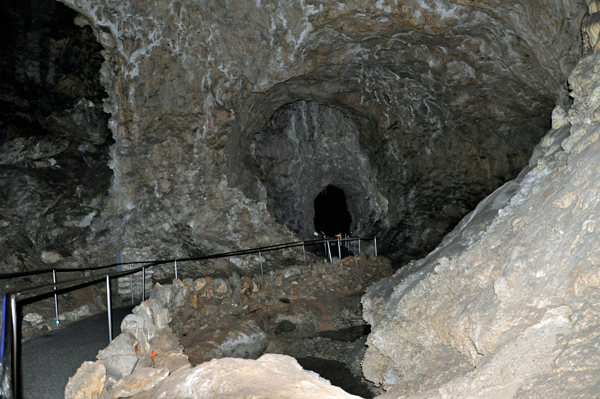 |
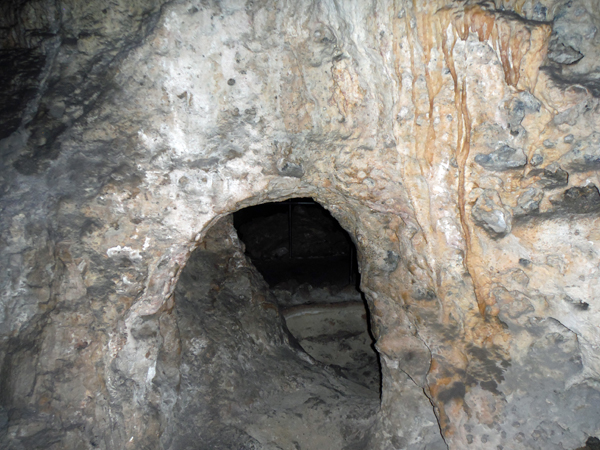 |
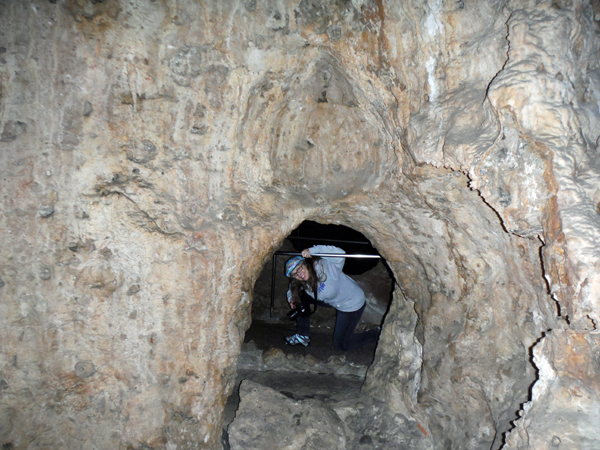 |
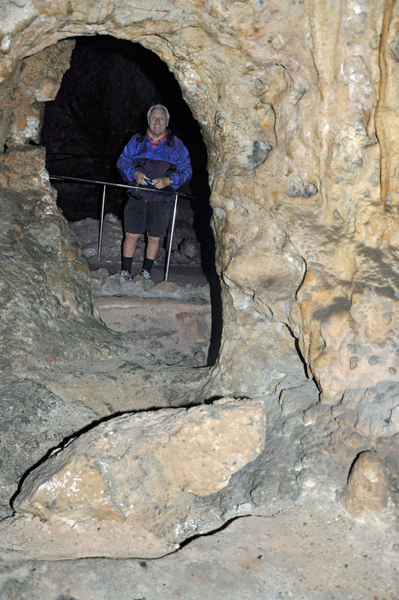 |
 The wire ladder below was installed in 1924 during a six-month survey exploration sponsored by the National Geographic Society. Built by Jim White, a cave guide, the ladder descends 90 feet into Lower Cave. Explorers felt uneasy dangling in this dark pit on the swaying ladder. The caves value was then established by explorers and scientists. Carlsbad Cavern became a National Monument in 1923 and a National Park in 1930. The wire ladder below was installed in 1924 during a six-month survey exploration sponsored by the National Geographic Society. Built by Jim White, a cave guide, the ladder descends 90 feet into Lower Cave. Explorers felt uneasy dangling in this dark pit on the swaying ladder. The caves value was then established by explorers and scientists. Carlsbad Cavern became a National Monument in 1923 and a National Park in 1930.
|
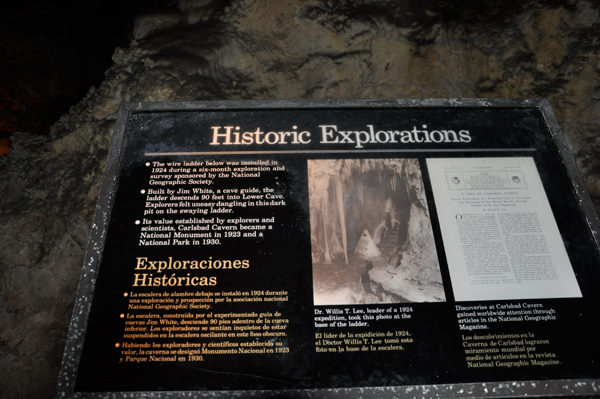 |
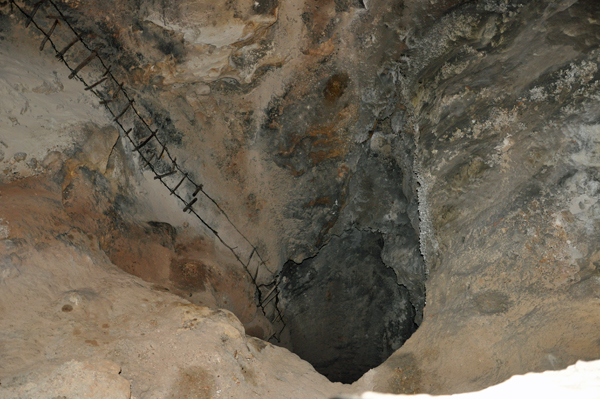 |
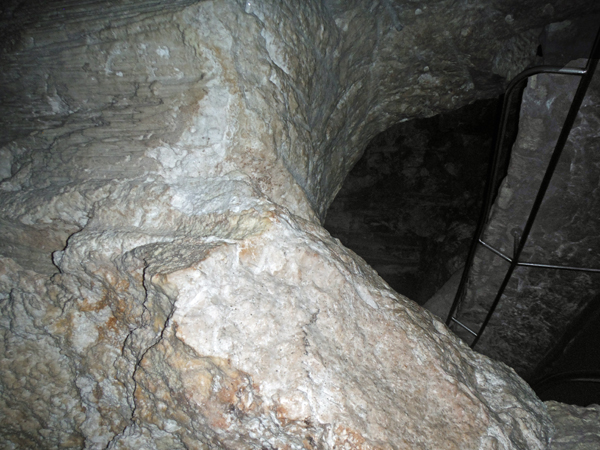 |
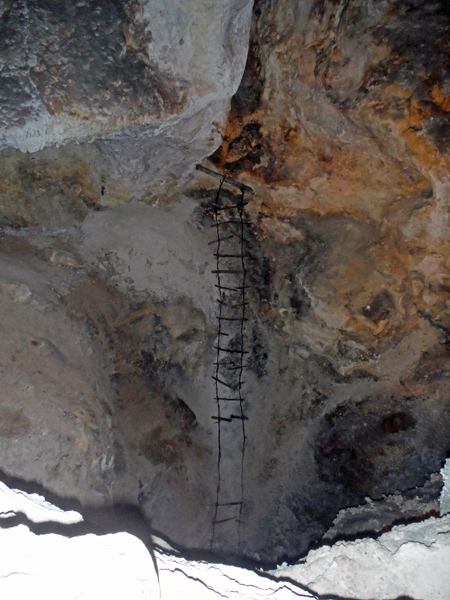 |
Below: The Lower Cave was
closed to visitors on this date. The two RV Gypsies stood at the 90-foot
high balcony, named the Jumping Off Place, which overlooks
the southern entrance to Lower Cave. Lower Cave is an undeveloped section
of Carlsbad Cavern consisting of more than one mile of surveyed passages.
Lower Cave and other undeveloped passages are being preserved in their
natural state for scientific study. New passages and rooms are still
being discovered. |
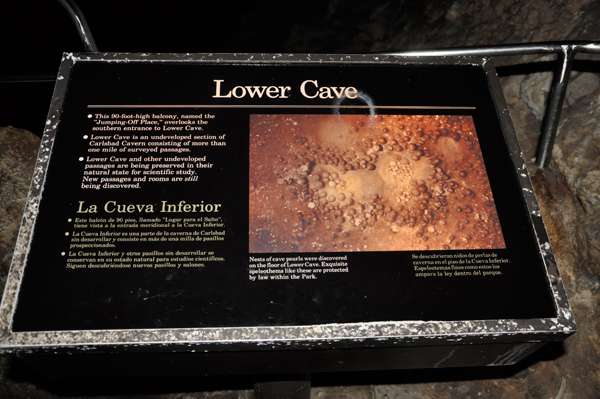 |
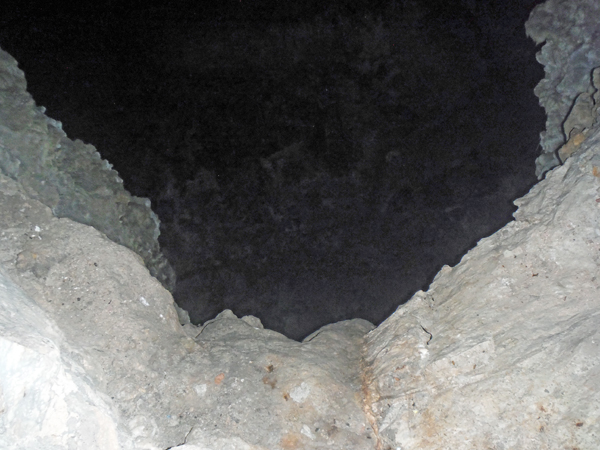 |
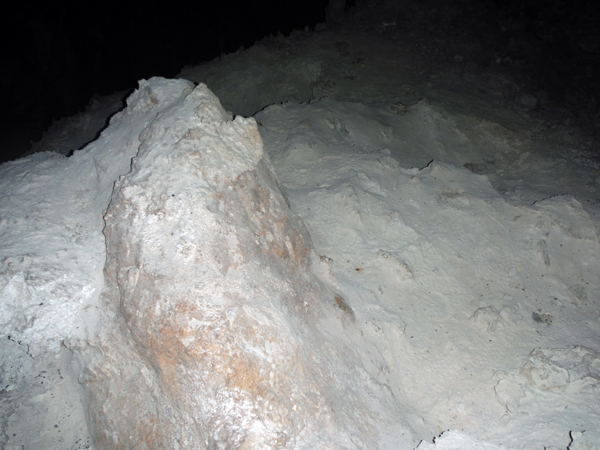 |
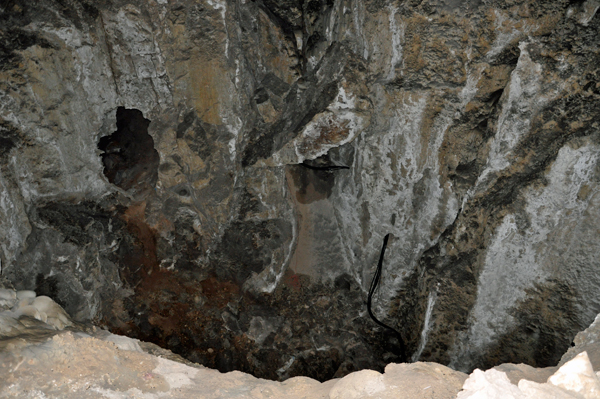 |
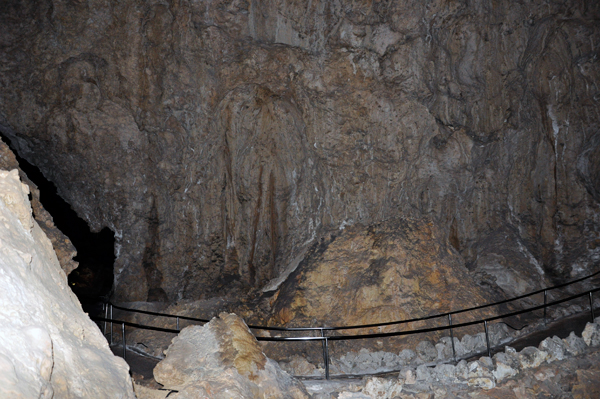 |
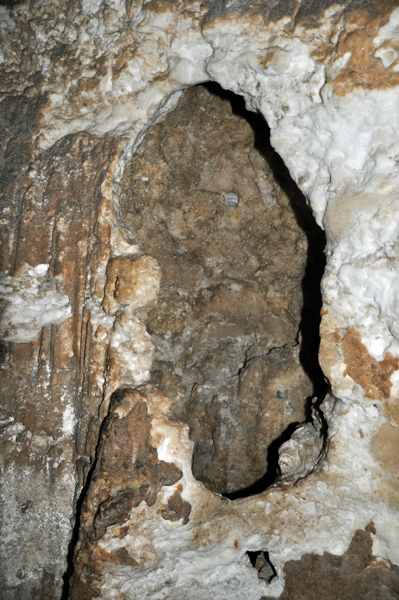 |
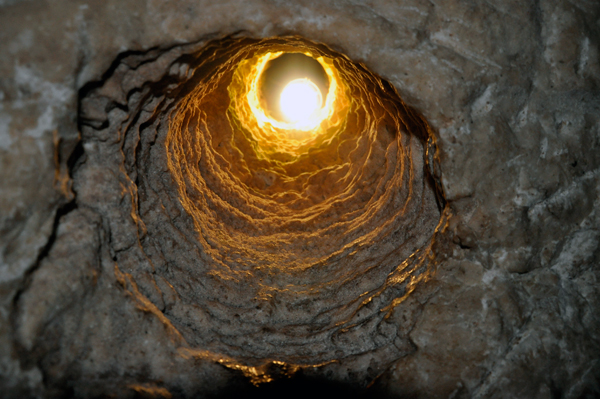 |
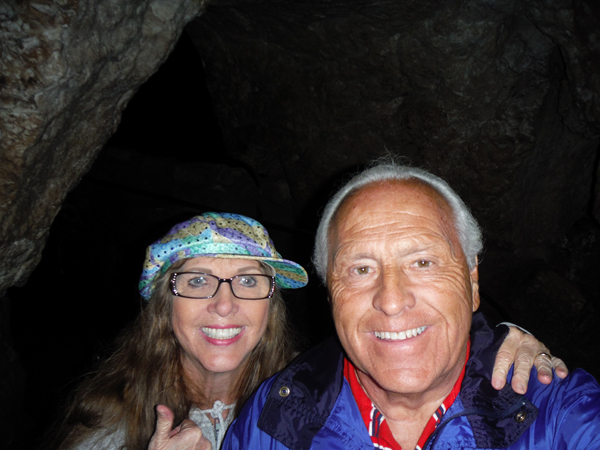 |
Below: Sign for Top of the Cross,
not really an item to photograph,
but a place within the Big Room because this end of the Big Room takes the shape of a huge cross. The sign is at the top of the cross looking toward its base. Lower Cave and Bottomless Pit lie at opposite end of the cross beam. Joints form a cross in the ceiling overhead. Dissolving of limestone by acidic solution along these joints determined the shape of the room. |
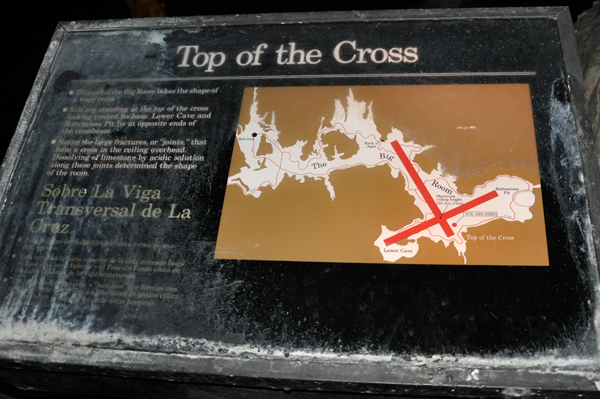 |
 Carlsbad Cavern's modern lighting system includes more than 1,000 bulbs and tubes, and 19 miles of concealed wires. The lights are designed to reveal the cavern's natural colors. The natural condition of the cavern is total darkness. Without artificial lights, you could not see your hand in front of your face. In the rare event of a power failure, the lights would be powered by a 315 kilowatt diesel generator on the surface. There are many battery-powered emergency lights in the cave. Carlsbad Cavern's modern lighting system includes more than 1,000 bulbs and tubes, and 19 miles of concealed wires. The lights are designed to reveal the cavern's natural colors. The natural condition of the cavern is total darkness. Without artificial lights, you could not see your hand in front of your face. In the rare event of a power failure, the lights would be powered by a 315 kilowatt diesel generator on the surface. There are many battery-powered emergency lights in the cave.
|
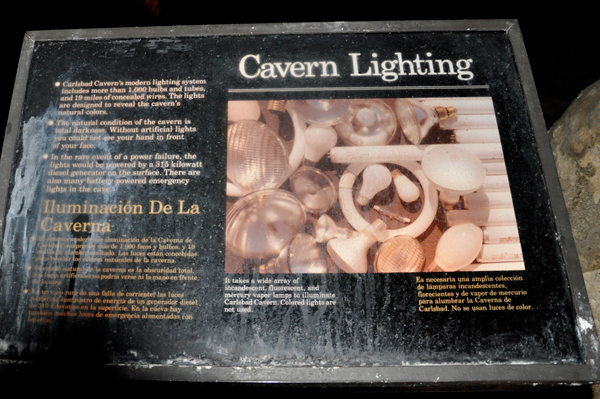 |
The massive slab of sparkling white rock throughout this cave is hydrated calcium sulfate, known as gypsum. Deposits can measure up to 15-feet thick. |
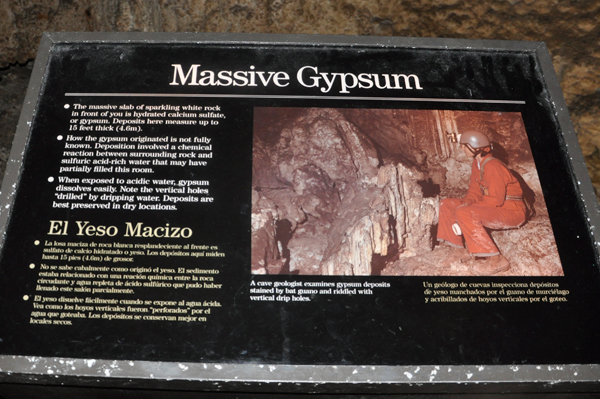 |
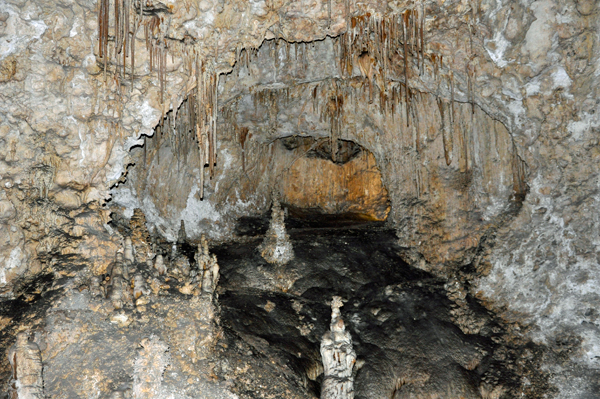 |
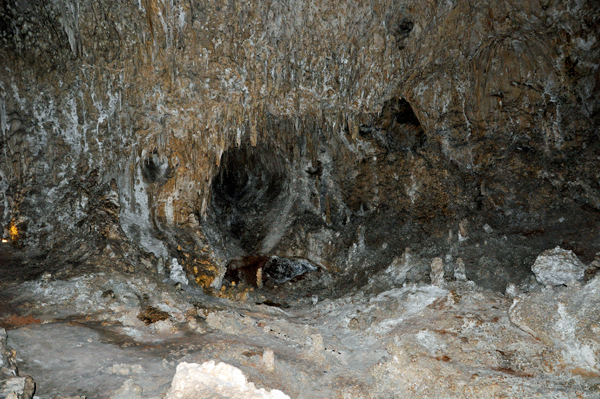 |
Fallen rock area. |
|
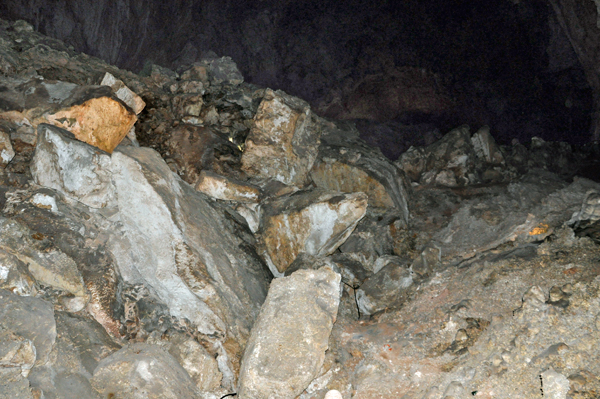 |
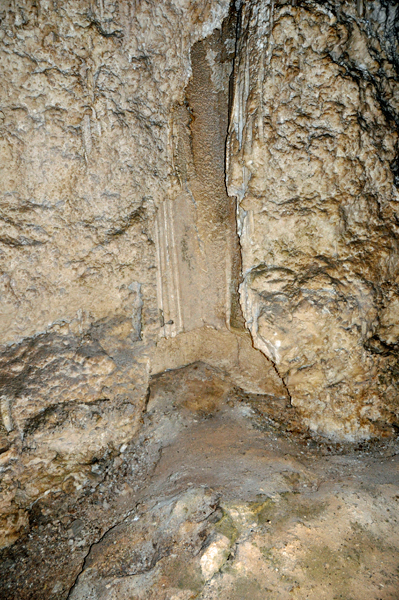 |
Below: The Reflection Pool |
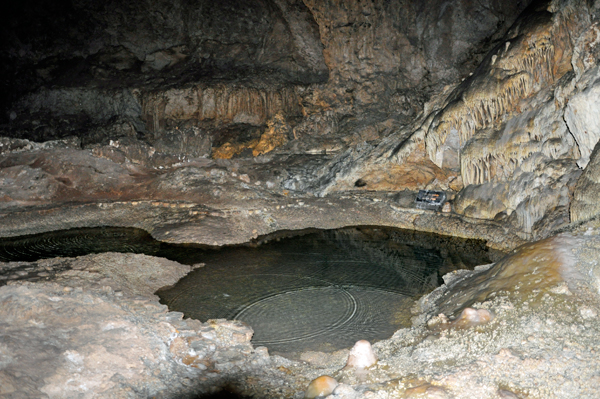 |
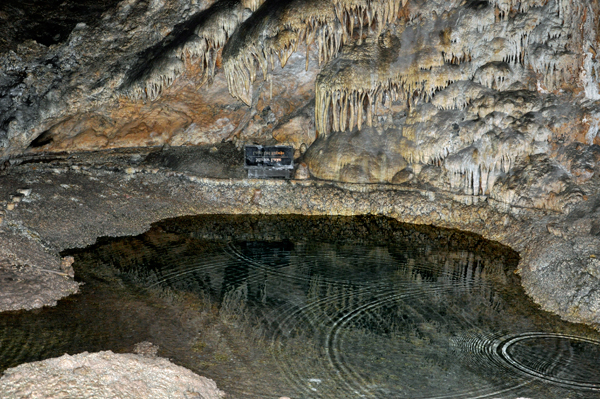 |
Below: "The
Bottomless Pit" is actually NOT bottomless, but is
in reality, 140-feet deep. |
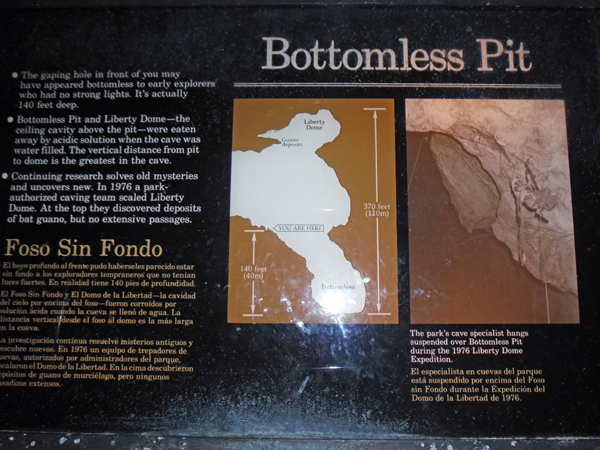 |
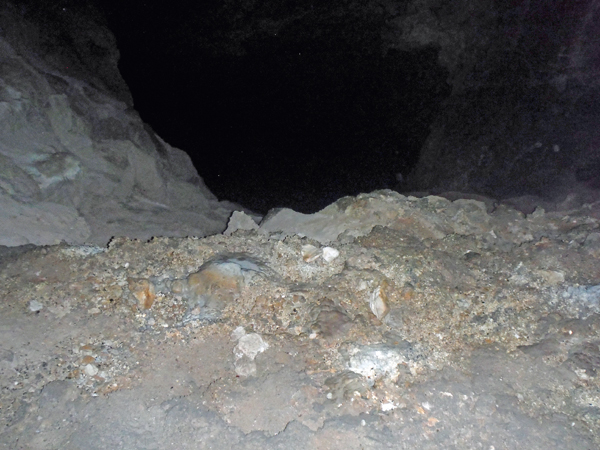 |
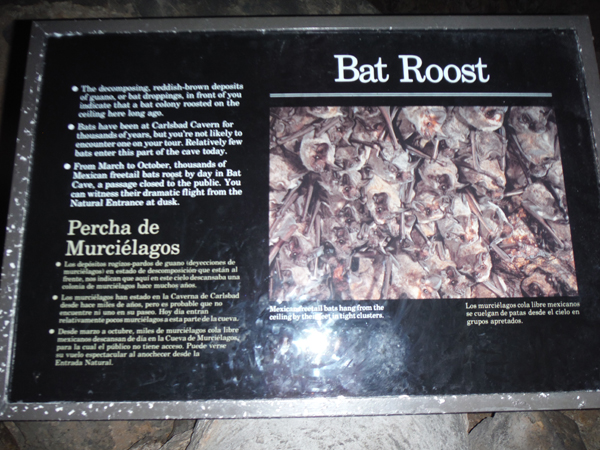 |
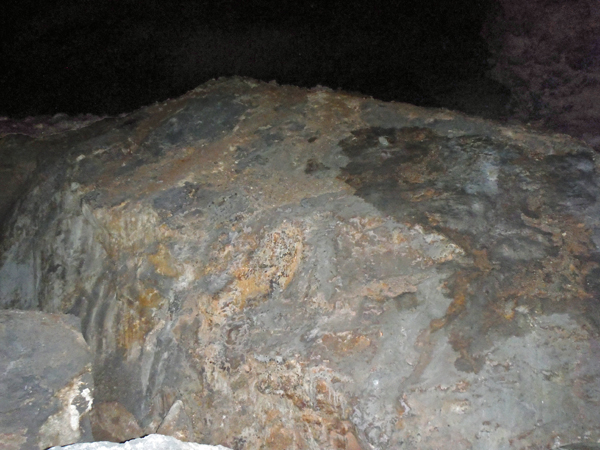 |














































 The wire ladder below was installed in 1924 during a six-month survey exploration sponsored by the National Geographic Society. Built by Jim White, a cave guide, the ladder descends 90 feet into Lower Cave. Explorers felt uneasy dangling in this dark pit on the swaying ladder. The caves value was then established by explorers and scientists. Carlsbad Cavern became a National Monument in 1923 and a National Park in 1930.
The wire ladder below was installed in 1924 during a six-month survey exploration sponsored by the National Geographic Society. Built by Jim White, a cave guide, the ladder descends 90 feet into Lower Cave. Explorers felt uneasy dangling in this dark pit on the swaying ladder. The caves value was then established by explorers and scientists. Carlsbad Cavern became a National Monument in 1923 and a National Park in 1930.